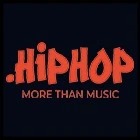- Joined
- Jul 10, 2007
- Messages
- 1,537
- Reaction score
- 16
How Drudge Has Stayed on Top :smilewinkgrin:
By DAVID CARR
http://www.nytimes.com/2011/05/16/business/media/16carr.html?_r=1&sq=how%20drudge&st=cse&scp=1&pagewanted=print
For most big news Web sites, about 60 percent of the traffic is homegrown, people who come directly to the site by dint of a bookmark or typing in www.latimes.com or www.huffingtonpost.com. The other critical 40 percent comes by referrals, the links that are the source of drive-by traffic, new readers and heat-seekers on a particular story.
By far, most of the traffic from links comes from the sprawling hybrid of Google search and news, which provides about 30 percent of the visits to news sites, according to a report released last week by the Project for Excellence in Journalism, part of the Pew Research Center. And the second? Has to be Facebook, right? Nope. Then Twitter must be the next in line. Except it isnât.
Give up? Itâs The Drudge Report, a 14-year-old site â a relic by Web standards â conceived and operated by Matt Drudge. Using data from the Nielsen Company to examine the top 21 news sites on the Web, the report suggests that Mr. Drudge, once thought of as a hothouse flower of the Lewinsky scandal, is now more powerful in driving news than the half-billion folks on Facebook. (According to the study, Facebook accounted for 3.3 percent of the referrals to news sites, less than half as many as generated by The Drudge Report.)
âWhen you look at his influence, it cuts across all kind of sites, both traditional news outlets and online-only sites,â said Amy S. Mitchell, the deputy director of the Project for Excellence in Journalism and one of the authors of the study. âHe was an early and powerful force in setting the news agenda and has somehow maintained that even as there has been a great deal of change in the way people get their news.â
With no video, no search optimization, no slide shows, and a design that is right out of mid-â90s manual on HTML, The Drudge Report provides 7 percent of the inbound referrals to the top news sites in the country. âItâs a real achievement,â said John F. Harris, the co-founder of Politico. âI covered the Clinton White House in 1997 and 1998 and I would never have conceived that he would be an important player in the landscape 12 years later. He does one thing and he does it particularly well. The power of it comes from the community of people that read it: operatives, bookers, reporters, producers and politicians.â
So in a news age when the next big thing changes as often as the weather, how can a guy who broke through on the Web before there was broadband still set the agenda? How can that be?
His durability is, first and foremost, a personal achievement, a testament to the fact that he is, as Gabriel Snyder, who has done Web news for Gawker, Newsweek and now The Atlantic, told me, âthe best wire editor on the planet. He can look into a huge stream of news, find the hot story and put an irresistible headline on it.â
On Thursday, a fairly straightforward Reuters article about a NATO attack on Col. Muammar el-Qaddafiâs compound occupied the skyline of the site with a particularly odious picture of the strongman girded by a headline that blared, âNEXT UP: NATO GOING FOR THE KILL.â Underneath, there were tons of links, news and pictures (Mr. Drudge has a real knack for photo editing) with all kinds of irresistible marginalia: âDesperate Americans Buy Kidneys from Peru Poorâ was just above an article about what a prolific e-mailer Osama bin Laden was in spite of his lack of access to the Internet.
Yes, Mr. Drudge is a conservative ideologue whose site also serves as a crib sheet for the likes of Rush Limbaugh and Sean Hannity. But if you believe that his huge traffic numbers are a byproduct of an ideologically motivated readership, consider that 15 percent of the traffic at WashingtonPost.com, which is not exactly a hotbed of Tea Party foment, comes from The Drudge Report.
It is, in its own way, a kind of utility, with stable traffic of about 12 million to 14 million unique visitors every month no matter what kind of news is breaking. Everyone goes there because, well, everyone else goes there.
And in the last 14 years, there have been no big redesigns, no big rollout of new features and no staffing up to provide original content. The initial site, designed to load quickly in the age of dial-up modems, remains relatively untouched. (As does Mr. Drudgeâs penchant to stay under the radar. He did not respond to e-mails requesting an interview.)
âThe genius of Drudge is the simplicity of the layout,â said Matt Labash, a writer for The Weekly Standard. âEveryone else who tries to knock him off complicates that. Thereâs no tabs. Thereâs no jumps. Thereâs hardly any clutter, even if he now runs more headlines than he used to. Heâs secure enough in the formula that heâs never changed it.â
Mr. Drudge understood the whole high-low bifurcation that news consumers are drawn to long before there was such a thing as Gawker. Andrew Breitbart, the founder of several conservative Web sites including Breitbart.com and the author of âRighteous Indignation,â met him in 1995 when Mr. Drudge was still working at the CBS gift shop in Los Angeles and running the Web site on the side. Mr. Breitbart immediately began helping him.
âMatt Drudge is an American original,â Mr. Breitbart said. âHe does not rig search optimization, he does not care about the next big Web innovation, he just has the best nose for news there is. He gives people everything, every single thing, they want to know in a single stop.â
A big part of the reason he is such an effective aggregator for both audiences and news sites is that he actually acts like one. Behemoth aggregators like Yahoo News and The Huffington Post have become more like fun houses that are easy to get into and tough to get out of. Most of the time, the summary of an article is all people want, and surfers donât bother to click on the link. But on The Drudge Report, there is just a delicious but bare-bones headline, there for the clicking. Itâs the opposite of sticky, which means his links actually kick up significant traffic for other sites.
Iâve lived the Drudge effect. Over a decade ago, I was working at Inside.com, a media news site, and wrote about a poll that had taken place on one of the presidential candidatesâ planes that seemed to suggest a liberal bias among the campaign press. Mr. Drudge liked it, for obvious reasons. Our servers melted as we stood back in wonder, staring at what the linked economy meant and how one guy in a fedora seemed to know something we didnât. He still does.
E-mail: [email protected];
Twitter.com/carr2n
By DAVID CARR
http://www.nytimes.com/2011/05/16/business/media/16carr.html?_r=1&sq=how%20drudge&st=cse&scp=1&pagewanted=print
For most big news Web sites, about 60 percent of the traffic is homegrown, people who come directly to the site by dint of a bookmark or typing in www.latimes.com or www.huffingtonpost.com. The other critical 40 percent comes by referrals, the links that are the source of drive-by traffic, new readers and heat-seekers on a particular story.
By far, most of the traffic from links comes from the sprawling hybrid of Google search and news, which provides about 30 percent of the visits to news sites, according to a report released last week by the Project for Excellence in Journalism, part of the Pew Research Center. And the second? Has to be Facebook, right? Nope. Then Twitter must be the next in line. Except it isnât.
Give up? Itâs The Drudge Report, a 14-year-old site â a relic by Web standards â conceived and operated by Matt Drudge. Using data from the Nielsen Company to examine the top 21 news sites on the Web, the report suggests that Mr. Drudge, once thought of as a hothouse flower of the Lewinsky scandal, is now more powerful in driving news than the half-billion folks on Facebook. (According to the study, Facebook accounted for 3.3 percent of the referrals to news sites, less than half as many as generated by The Drudge Report.)
âWhen you look at his influence, it cuts across all kind of sites, both traditional news outlets and online-only sites,â said Amy S. Mitchell, the deputy director of the Project for Excellence in Journalism and one of the authors of the study. âHe was an early and powerful force in setting the news agenda and has somehow maintained that even as there has been a great deal of change in the way people get their news.â
With no video, no search optimization, no slide shows, and a design that is right out of mid-â90s manual on HTML, The Drudge Report provides 7 percent of the inbound referrals to the top news sites in the country. âItâs a real achievement,â said John F. Harris, the co-founder of Politico. âI covered the Clinton White House in 1997 and 1998 and I would never have conceived that he would be an important player in the landscape 12 years later. He does one thing and he does it particularly well. The power of it comes from the community of people that read it: operatives, bookers, reporters, producers and politicians.â
So in a news age when the next big thing changes as often as the weather, how can a guy who broke through on the Web before there was broadband still set the agenda? How can that be?
His durability is, first and foremost, a personal achievement, a testament to the fact that he is, as Gabriel Snyder, who has done Web news for Gawker, Newsweek and now The Atlantic, told me, âthe best wire editor on the planet. He can look into a huge stream of news, find the hot story and put an irresistible headline on it.â
On Thursday, a fairly straightforward Reuters article about a NATO attack on Col. Muammar el-Qaddafiâs compound occupied the skyline of the site with a particularly odious picture of the strongman girded by a headline that blared, âNEXT UP: NATO GOING FOR THE KILL.â Underneath, there were tons of links, news and pictures (Mr. Drudge has a real knack for photo editing) with all kinds of irresistible marginalia: âDesperate Americans Buy Kidneys from Peru Poorâ was just above an article about what a prolific e-mailer Osama bin Laden was in spite of his lack of access to the Internet.
Yes, Mr. Drudge is a conservative ideologue whose site also serves as a crib sheet for the likes of Rush Limbaugh and Sean Hannity. But if you believe that his huge traffic numbers are a byproduct of an ideologically motivated readership, consider that 15 percent of the traffic at WashingtonPost.com, which is not exactly a hotbed of Tea Party foment, comes from The Drudge Report.
It is, in its own way, a kind of utility, with stable traffic of about 12 million to 14 million unique visitors every month no matter what kind of news is breaking. Everyone goes there because, well, everyone else goes there.
And in the last 14 years, there have been no big redesigns, no big rollout of new features and no staffing up to provide original content. The initial site, designed to load quickly in the age of dial-up modems, remains relatively untouched. (As does Mr. Drudgeâs penchant to stay under the radar. He did not respond to e-mails requesting an interview.)
âThe genius of Drudge is the simplicity of the layout,â said Matt Labash, a writer for The Weekly Standard. âEveryone else who tries to knock him off complicates that. Thereâs no tabs. Thereâs no jumps. Thereâs hardly any clutter, even if he now runs more headlines than he used to. Heâs secure enough in the formula that heâs never changed it.â
Mr. Drudge understood the whole high-low bifurcation that news consumers are drawn to long before there was such a thing as Gawker. Andrew Breitbart, the founder of several conservative Web sites including Breitbart.com and the author of âRighteous Indignation,â met him in 1995 when Mr. Drudge was still working at the CBS gift shop in Los Angeles and running the Web site on the side. Mr. Breitbart immediately began helping him.
âMatt Drudge is an American original,â Mr. Breitbart said. âHe does not rig search optimization, he does not care about the next big Web innovation, he just has the best nose for news there is. He gives people everything, every single thing, they want to know in a single stop.â
A big part of the reason he is such an effective aggregator for both audiences and news sites is that he actually acts like one. Behemoth aggregators like Yahoo News and The Huffington Post have become more like fun houses that are easy to get into and tough to get out of. Most of the time, the summary of an article is all people want, and surfers donât bother to click on the link. But on The Drudge Report, there is just a delicious but bare-bones headline, there for the clicking. Itâs the opposite of sticky, which means his links actually kick up significant traffic for other sites.
Iâve lived the Drudge effect. Over a decade ago, I was working at Inside.com, a media news site, and wrote about a poll that had taken place on one of the presidential candidatesâ planes that seemed to suggest a liberal bias among the campaign press. Mr. Drudge liked it, for obvious reasons. Our servers melted as we stood back in wonder, staring at what the linked economy meant and how one guy in a fedora seemed to know something we didnât. He still does.
E-mail: [email protected];
Twitter.com/carr2n








